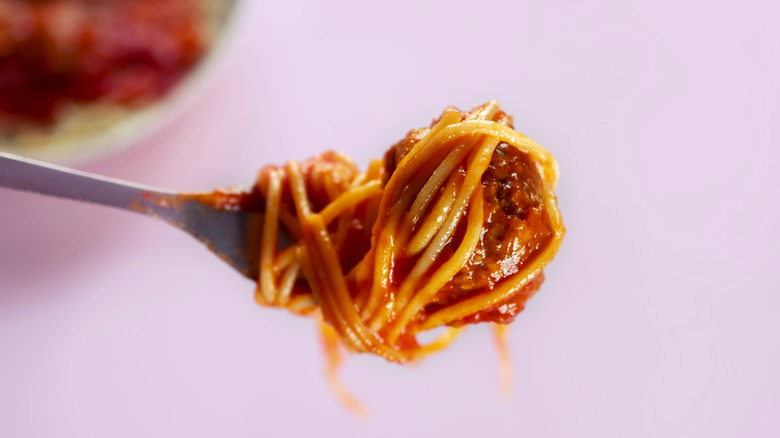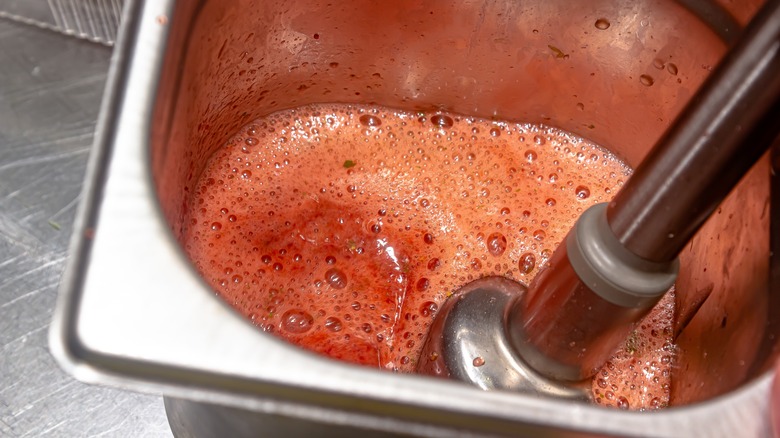Here's Why Your Homemade Tomato Sauce Might Be Turning Pink
A good homemade tomato sauce requires no frills. There's nothing better than sweet, in-season tomatoes, garlic, and herbs atop a tangle of fresh pasta. While most chefs can agree good sauce starts with good ingredients (especially carefully-selected tomatoes), there's a whole world of preparation methods out there. Some recipes require hours of simmering. Others simply request that you drop your ingredients into a blender and hit the button.
While the blender approach makes for quick and convenient cooking, it can also yield a pastel pasta sauce. If you've ever tossed your tomatoes into the blender and watched as your ingredients turned to a pink froth, you've seen the blender blunder in action. Tomato sauce turns orange or a pale pink because the fast-moving blender blades churn lots of air into the sauce. Aerated salsas can acquire a similar rosy look. Luckily, there are a few remedies for returning your tomato sauce to its classic rich-red hue.
How to fix pink sauce
Some pasta sauces are meant to appear pink, with a dash of added cream or blended beats giving the dish a rose-colored finish. Basic tomato sauces, on the other hand, should typically mirror the red ripeness of a fresh tomato. While pastel pasta sauce might sound pretty, it's also possible to return your sauce to that desired shade of classic crimson.
Sometimes, letting the sauce set and the bubbles settle can return your sauce to its original shade. Some chefs also recommend blending the sauce a minute or two longer to banish the bubbles. You can also return the sauce to the stovetop to simmer a bit longer. As the sauce thickens, it becomes deeper in color. A little tomato paste can also intensify the flavor and color of your homemade tomato sauce by thickening its texture and enriching its taste.

